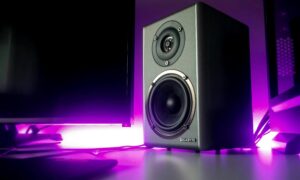You wake up to your smartphone alarm, hop in your car, and check your fitness tracker. By lunchtime, you’ve already used dozens of devices powered by Cable and Sensors. These tiny components work behind the scenes to make our modern world possible.
But what exactly are cables and sensors? And why do they matter so much? This post will explore how these silent heroes power everything from your morning coffee maker to life-saving medical equipment. You’ll discover their everyday uses, medical applications, and what the future holds for these essential technologies.
What Are Cables and Sensors?
Cables are pathways that carry electrical signals, power, or data between different parts of a device. Think of them as the highways that let information travel from one place to another. Without cables, your phone couldn’t charge, your computer couldn’t connect to the internet, and your car couldn’t start.
Sensors are like the eyes and ears of technology. They detect changes in their environment and turn those changes into electrical signals. A temperature sensor feels heat, a motion sensor detects movement, and a pressure sensor responds to touch or weight.
Together, cables and sensors form the nervous system of modern technology. Sensors gather information about the world around us, and cables carry that information to processors that decide what to do next.
Life-Saving Medical Applications
High-tech cable and sensors are important in the medical industry that saves lives and enhances patient welfare. Possibility of having the advanced machines that physicians utilize to diagnose certain illnesses, attend to patients, as well as carry out complex surgical methods, is realized by these parts.
Heart monitors are used to create electrical signals monitored in your heart. These electronic signals are transmitted into special cables to machines that indicate your heart rhythm on a screen. The equipment will create an alarm in case of something going wrong and this will raise an alarm among medical staff.
MRI machines also employ the powerful sensors and capture high definition images of the inner body. The wires in these machines should be extremely accurate since even the slightest mistake might as well compromise the quality of the images that doctors require in making their diagnosis.
One of the roles of surgical robots is to depend on sensors in order to provide surgeons with an accurate level of control when carrying out operations. These sensors are able to check pressure, motion and position in a very remarkable manner. The wires leading to these sensors have to be efficient in that they serve impeccably when it comes to life or death operations.
Firms such as Quince Medical focus on the production of the top quality cables and sensors required by the medical equipment manufacturers. These elements should undergo strict safety requirements and should be stable in rigorous conditions of hospitals.
Such medical devices as blood pressure monitors, insulin pumps, and pacemakers are designed to work with the help of sensors. These devices need cables that will not be toxic to the human body even after a prolonged usage.
Revolutionary Technological Advances
The world of cable and sensors is changing rapidly. Engineers are shrinking, increasing the precision, and improving energy consumption of the sensors. There are already sensors that are so small they can be worn in the form of contact lens or ingested in a pill.
There is the growth of wireless sensors, which will make the use of physical cables unnecessary in some of them. These sensors have the ability to exchange information radio frequencies, Bluetooth or WiFi. Nevertheless, they also require cables when powering up and when receiving wireless messages where they may not be reliable.
Cables and sensors are also newly possible through use of smart materials.Some cables can now change their properties based on temperature or pressure. Sensors can be made using shape-memory alloys so that after bending/compression, they revert to their original shape.
Sensors are getting clever due to artificial intelligence. Modern sensors are not nimble to detect changes, but can analyze patterns and make relevant predictions. An intelligent sensor may also tell that a machine is becoming ready to tip over at some time in the future.
Nanotechnology is facilitating molecule detecting sensors. One day you may find that these super-sensitive devices diagnose diseases based upon just a drop of blood, or they might determine pollution at quantities much lower than now possible with existing technology.
The Future of Connected Technology
The future promises even more amazing developments in cable and sensor technology. Scientists are working on sensors that can be printed like newspapers, making them incredibly cheap to produce. These printed sensors could be embedded in everything from food packaging to clothing.
Quantum sensors represent the next frontier in measurement technology. These devices use the strange properties of quantum physics to detect changes with unprecedented precision. They might one day allow us to see brain activity in real-time or detect gravitational waves from space.
Self-healing cables could revolutionize how we think about maintenance. These cables would automatically repair small breaks or damage, reducing the need for repairs and replacements. This technology could be especially valuable in remote locations or dangerous environments.
Biodegradable sensors could help address environmental concerns. These sensors would break down naturally after use, reducing electronic waste. They might be used for temporary monitoring in agriculture or environmental research.
The Internet of Things (IoT) will require billions of new sensors and the cables to connect them. These sensors will monitor everything from soil moisture in farms to traffic patterns in cities. The data they collect will help us make better decisions about resource use and urban planning.
Leading the Way in Medical Innovation
The medical field continues to push the boundaries of what’s possible with cable and sensors. Companies like Quince Medical are at the forefront of this innovation, developing specialized solutions for healthcare applications.
Advanced sensor technology is making possible new types of medical devices that were once science fiction. Sensors that can be implanted in the human body can now monitor health conditions continuously and wirelessly transmit data to doctors.
The cables used in medical devices are becoming more sophisticated as well. They must be able to carry multiple types of signals simultaneously while remaining flexible enough to move with the human body. Some medical cables are now designed to last for decades inside the human body without degrading.
Telemedicine relies heavily on sensors to allow doctors to examine patients remotely. These sensors can measure vital signs, take images, and even perform some types of tests from a distance. The cables connecting these devices must provide clear, reliable connections for accurate remote diagnoses.
Why These Silent Heroes Matter
Cable and sensors might be invisible to most people, but they’re essential to almost everything we do. They enable the smartphones that keep us connected, the cars that get us where we need to go, and the medical equipment that keeps us healthy.
As technology continues to advance, these components will become even more important. They’ll help create smarter cities, more efficient transportation systems, and better healthcare for everyone.
Understanding these fundamental components helps us appreciate the complexity of the devices we use every day. It also helps us make better decisions about the technology we choose and how we use it.

































